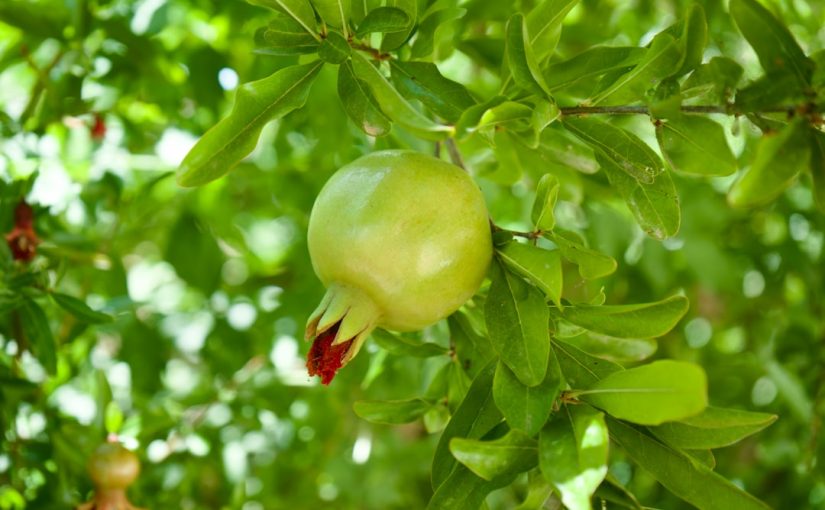One of the most satisfying aspects of cultivating fruit trees is anticipating a bountiful harvest. For enthusiasts and prospective growers eyeing the vibrant pomegranate, a common and critical question arises: “How much fruit does a pomegranate tree produce?” The answer, while seemingly straightforward, is wonderfully complex, influenced by a myriad of environmental, horticultural, and genetic factors. Understanding these variables is key to setting realistic expectations and, more importantly, to maximizing the potential of your own pomegranate tree. From its tender beginnings to its robust maturity, a pomegranate’s fruit-bearing capacity evolves significantly, promising a rewarding yield under the right conditions and dedicated care. Let’s delve into what truly defines a productive pomegranate tree.
Factors influencing pomegranate yield
The fruit production of a pomegranate tree is not a fixed number; instead, it’s a dynamic outcome shaped by several crucial elements. Firstly, tree age and maturity play an undeniable role. Young trees, typically in their first few years after planting, focus their energy on establishing a strong root system and vegetative growth, producing little to no fruit. As they mature, their capacity for fruiting increases dramatically. Secondly, cultivar selection is paramount. Some pomegranate varieties are inherently more prolific than others, while some are bred for specific qualities like fruit size, sweetness, or disease resistance, which can indirectly affect overall yield. For instance, varieties like ‘Wonderful’ are renowned for their heavy production.
Environmental conditions are also critical. Pomegranates thrive in a Mediterranean climate, requiring long, hot, dry summers for optimal fruit development and cool winters for dormancy. Sufficient sunlight exposure, typically 6-8 hours daily, is non-negotiable for abundant fruiting. Furthermore, soil quality and drainage are vital; well-drained loamy soil is preferred, as waterlogged conditions can severely impede growth and fruit set. Lastly, proper cultural practices, including consistent watering, balanced fertilization, strategic pruning, and effective pest and disease management, significantly impact a tree’s health and its ability to produce fruit.
Typical yield by tree age and maturity
A pomegranate tree’s journey from a young sapling to a prolific producer is a gradual one, with yield increasing significantly as it ages and establishes itself. It’s important for growers to understand these stages to manage expectations and provide appropriate care. While individual results can vary based on the factors discussed previously, there are general benchmarks for fruit production:
| Age Group | Typical Fruit Production (per tree) | Notes |
|---|---|---|
| Young (1-2 years) | 0-5 fruits | Focus on root establishment; fruits often removed to encourage growth. |
| Developing (3-4 years) | 10-30 fruits | Begins consistent fruiting; fruit size may still be smaller. |
| Mature (5-15+ years) | 50-200+ fruits | Peak production years; high quality and quantity with good care. |
| Very Mature/Old (20+ years) | Can remain high or decline | Yield sustained with diligent pruning and nutrient management; may decline without it. |
As you can see from the table, a pomegranate tree typically doesn’t hit its stride until it’s at least five years old. A fully mature, healthy tree under ideal conditions can yield a remarkable amount of fruit, sometimes exceeding 200 pomegranates in a single season. Commercial orchards often aim for an average of 100-150 fruits per tree, balancing quantity with fruit quality and size for market demands.
Optimizing your pomegranate harvest
Achieving a plentiful and high-quality pomegranate harvest requires proactive management and consistent care throughout the year. One of the most critical aspects is proper irrigation. While pomegranates are drought-tolerant once established, consistent and adequate watering, especially during flowering and fruit development, is crucial for good fruit size and preventing fruit splitting. Deep watering is generally preferred over frequent shallow watering. Secondly, balanced fertilization supports vigorous growth and fruit production. A soil test can guide specific nutrient needs, but a balanced fertilizer applied in early spring and mid-summer often works well. Avoid excessive nitrogen, which can promote leafy growth at the expense of fruit.
Strategic pruning is another key practice. In the dormant season, remove dead, damaged, or crossing branches to improve air circulation and sunlight penetration. Thinning out excess suckers from the base of the tree is also important. For fruit production, some growers practice fruit thinning, removing smaller or damaged fruits early in the season to allow the remaining pomegranates to grow larger and develop better. Finally, vigilance against pests and diseases is essential. Common issues like aphids or certain fungal spots can impact fruit quality and quantity if not addressed promptly. Implementing integrated pest management strategies will protect your potential yield.
In conclusion, the question of “how much fruit does a pomegranate tree produce?” unveils a fascinating interplay of horticulture and environmental factors. While a young tree might offer a modest yield, a mature, well-cared-for pomegranate tree can become an incredibly prolific producer, gracing its owner with dozens, if not hundreds, of its jewel-toned fruits annually. The journey from planting to a bountiful harvest is deeply satisfying, influenced by everything from the chosen cultivar and the tree’s age to the quality of its soil and the dedication of its caretaker. By understanding the key factors that govern fruit production—including appropriate watering, timely fertilization, strategic pruning, and pest management—growers can significantly enhance their tree’s potential. Ultimately, with the right approach, your pomegranate tree can transition from a simple landscape accent into a truly productive and rewarding source of delicious, home-grown fruit for many years to come.
Image by: Meizhi Lang
